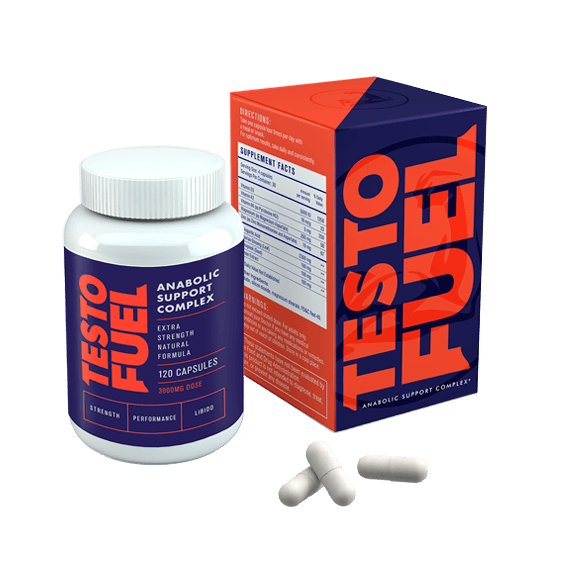Does Working Out Increase Testosterone?
What do muscle mass, bone density, fertility, and mental health all have in common?
Besides being four pillars holding up your overall health, they’re all intrinsically connected to testosterone.
So, when your levels drop, the symptoms can start to take over your quality of life – which is why many men turn to exercise to help.
Does working out increase testosterone? Yes! There’s no doubt about it – providing you’re using the right tools for the job[1][2].
Experts say that men who exercise typically have healthier testosterone than sedentary types[3].
If you’re a regular in the free weights zone and know the gym staff by name, you’re already doing right by your T. Sitting on the couch every day in a Netflix-binge induced haze? Not so much.
But, as always, good can be made better. It’s more about performing the optimal type of exercise for testosterone rather than freestyling every single session.
This is what we’ll be exploring today – setting up your workout week for hormone success.
Low testosterone levels in men
Low testosterone – aka hypogonadism – can be a concern for men. When you understand the intricate roles T plays in your entire wellbeing, keeping an eye out for falling levels is always on your mind.
Because when they do become low, the side effects aren’t pleasant. Testosterone deficiency can cause a host of complications, ranging from frailty and infertility, through to low libido and depressive symptoms.
Other serious side effects include increased risk of heart disease and diabetes, two deadly conditions contributing massively to the mortality of modern men.
Your testosterone levels should lie somewhere between 300-1000 ng.dL to be healthy. Anything below 300 ng.dL is considered low, which can be confirmed with a quick series of blood tests.
How exercise affects testosterone levels
Exercise takes a dual approach to affecting testosterone:
Obese men have on average 30% less testosterone than their healthier-weight friends[4].
There’s a link between low-testosterone and being overweight, with one influencing the other, creating a cycle of weight gain and failing hormones[5].
Losing weight has been shown to help certain men reclaim their testosterone health, with exercise being more beneficial for obese men than dieting alone[6][7].
Everybody knows pumping iron builds muscle – even little old ladies recognize classic Arnie. Yet, if more men knew how powerful lifting could be for boosting T, you’d never find an empty squat rack ever again.
One way lifting can increase testosterone is by augmenting your amount of lean mass. It can create a surge in the short-term and hike-up levels in the long-term too.
The more muscle mass you have, the more can be stimulated during a workout, making for an equally larger testosterone release.
This is exactly why training with multi-joint compound movements offers the best T response.
The best exercises to increase testosterone
Not all exercise is created equal when trying to increase testosterone.
Almost all kinds of training have some potential to hike-up the hormone, but two specifically stand head and shoulders above the rest.
Compound lifts
Resistance training – aka lifting weights – has been proven to positively influence testosterone time and time again.
Evidence suggests spending time in the weights section can cause adaptations in both the short- and long-term for men, with potentially temporary results for women[8][9][10].
Compound lifts are resistance training movements that employ multiple joints. As a result, they target a greater amount of muscle groups, and ultimately stimulate more fibers.
Think squats over the bench press and benching over bicep curls – the more muscles the better[11].
When it comes to weightlifting adaptations, volume is king. You’ll only trigger a desired testosterone response if you carry out enough work.
Adaptations work like a bell curve too. So, if you overdo it, you’re likely to step into the realm of overreaching and possibly overtraining.
More volume doesn’t necessarily mean more testosterone – it’s a tricky thing to master[12].
Research suggests that following a 6-10 rep range for 3 to 10 sets should be enough to get your T flowing[13].
There’s a chance it could diminish if you spend hours in the iron house too, so keep workouts compact and around 45-60 minutes long. Get in, get out, get results! Gains have always been about quality over quantity – but you knew that already.
If you’re new, aim for three to four lifting sessions a week with a rest day or two in between.
Already an experienced lifter? Sick to your five or six sessions and really home in on how well you’re recovering. Train hard, recover harder.
In short, the best exercises are ones with more muscle involved. Studies show that you’re much better off hitting a set of squats than sticking to isolated leg extensions[14].
Some men trip up here, immediately joining the gym with the idea of imitating split routines posted by pro bodybuilders. Instead, base your workouts around compounds with a sprinkling of isolations.
Here are some of the most effective exercises for increasing testosterone. Sorry, no bicep curls today.
- Squat
- Deadlift
- Push press
- Bench press
- Barbell clean
- Pull up
High-Intensity Interval Training (HIIT)
High-intensity interval training (HIIT) is the go-to workout for people in a hurry. It’s short, intense, and packed with more than a handful of health promoting benefits. Not bad to say a typical HIIT session lasts for a fast 10-30 minutes.
It’s well known that HIIT can cause significant improvements in cardiovascular function and body composition. Some evidence suggests the rewards can rival regular cardio sessions that are twice as long[15][16].
But, HIIT’s ability to hike up testosterone levels in men is a lesser known attribute. Research suggests timing HIIT sessions into your workout week could help improve testosterone levels if you’re male[17][18]. Unfortunately, though, the same response isn’t shown in women.
The trick to getting the most out of HIIT is to keep your heart rate elevated.
Work at above 80% max-capacity (the higher the better), following training intervals with short, low-activity rest periods. Aim for around 30-90 seconds on, followed by 30-120 seconds off.
The Tabata training principle of 30-seconds work followed by 30-seconds rest for four minutes, repeated five times is a great place to start.
Each four-minute block equals one round, with the aim of completing four or five in a day. Run straight through without stopping and you can crush one hell of a workout in just 20-minutes.
Exercises that lower testosterone
While a moderate amount of cardio can contribute to keeping you in great shape, you can always have too much of a good thing.
Chronic endurance exercise can quickly cut ties with your testosterone, even if you experience other incredible physiological advancements.
People who undergo chronic endurance training complete some amazing feats. Top level marathon runners might bank up to 200 kilometers in road miles a week leading up to competition, with cyclists clocking in even more.
All of this mileage places a significant amount of stress on the body, stress that the endocrine system is incredibly sensisitve to.
It’s not uncommon for endurance athletes to suffer chronically elevated cortisol levels as a natural stress response. Now, this is an issue, as cortisol and testosterone have an inverse relationship.
When one thrives, the other diminishes, with the same being said in reverse.
Endurance athletes have been found to have lower resting testosterone levels on average, with most at the bottom end of normal[19].
Some scientists have even devised a term for endurance athletes whose training inflicts low testosterone – the ‘exercise-hypogonadal male’.
If you’re not the type to get excited about a six-AM HIIT class, don’t panic. Moderate cardio won’t kill your hormones if you keep workouts around 30-minutes long.
Going for a quick run, cycling to work, or strapping into the row machine on a night will all contribute to keeping you fit, lean, and healthy.
It’s the chronic kind of cardio you can’t let creep in – save the marathon training for another time.
Other things to increase testosterone naturally
Testosterone is a product of its environment. Optimizing your body creates a space for T to thrive and surge underneath your skin. There are other things shown to increase testosterone naturally, not just exercise:
1. Eat a balanced diet
Testosterone relies on all three of the major macros in some way. Fat is arguably the most important component for T, because your body needs cholesterol to synthesize it.
Protein is also needed to maintain muscle mass and strength, which we saw earlier helps you lift weights to support testosterone production.
Other important aspects include the likes of zinc, vitamin D, and magnesium – three micronutrients with strong-ties to healthy masculine hormones. Certain supplements like testosterone boosters and multivitamins may help here.
2. Sleep well
Sleep deprivation is a silent killer of testosterone. Studies show that getting as little as five hours of sleep can have the same effect as aging 10-15 years in some men[20].
It’s estimated that around 15% of working American adults get less than five hours of kip a night, opening the floodgates to a spectrum of health issues in the process.
Try to follow a regular routine of seven to hours quality sleep every single night – even on weekends. Not only will you feel fitter and more alert, but your testosterone will thank you for it too.
3. Relax
Some of us like to wear our stress with pride – it shows we work harder than every other man in the room, right?
But, what a lot of men don’t want to admit is their stress is damaging their health and severing their testosterone levels[21].
We saw the effect of chronic stress on endurance athletes’ testosterone, and the same can be said if you’re worked up and burnt out from life too.
Your body doesn’t know the difference between trying to get a start-up to get off the round or preparing to fight a lion. It senses a threat and danger is danger – no discrimination.
So, to stop your stress-induced cortisol levels becoming chronic and disrupting testosterone, try to relax more.
Pick up where you left off with an old chilled-out hobby like hiking or take time to learn an instrument. There’s a lot to be said for testosterone elevating results of transcendental meditation too[22].
Bottom line – reduce stress to remove the barriers trapping upon your most important hormone.
The bottom line
So, does working out increase testosterone? Yes! There’s just no way to deny it when the evidence stacks so high.
What was once purely anecdotal has since been put through the rigors of science. Exercise-induced testosterone increase is no longer a mystical, old-school tale told among fellow lifters – it’s now a cold hard fact.
According to the experts, heavy lifting and HIIT are the tools to turn you into an optimized testosterone titan. So, why wait until tomorrow when you can start today?



